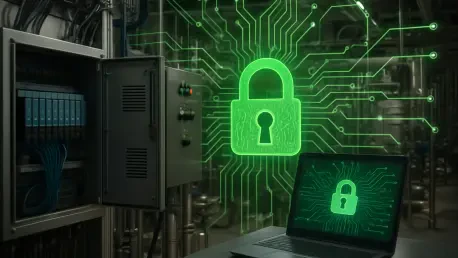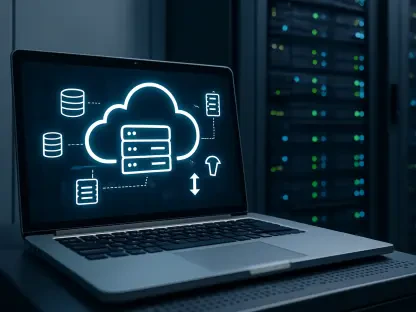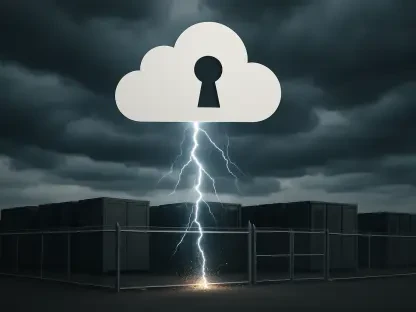Imagine a world where a single cyberattack halts electricity grids, disrupts water supply, and paralyzes transportation systems—all within hours, creating chaos across entire regions. This isn’t a dystopian fantasy but a real threat facing critical infrastructure today due to vulnerabilities in Operational Technology (OT). As the backbone of industries like energy, manufacturing, and utilities, OT systems control physical processes that keep society running. However, their increasing integration with digital networks has opened the door to unprecedented cyber risks. This review delves into the core features of OT, examines its cybersecurity challenges, and evaluates the strategies shaping its defense against sophisticated threats.
Defining Operational Technology and Its Role
Operational Technology encompasses the hardware and software that manage and monitor physical processes in industrial environments. Distinct from Information Technology (IT), which handles data and communication, OT focuses on the direct control of machinery and infrastructure. Foundational to sectors such as energy distribution, manufacturing automation, and transportation safety, OT ensures that power plants operate efficiently, production lines run smoothly, and transit systems remain secure. Its significance cannot be overstated, as disruptions in these areas directly impact national stability and public safety.
The evolution of OT has seen it transition from isolated, standalone systems to interconnected networks. This shift, driven by the need for real-time data and remote access, has amplified operational efficiency but also introduced a critical dependency on cybersecurity. As OT systems increasingly interface with IT networks, the traditional barriers that once protected them are eroding, exposing critical infrastructure to a range of digital threats that demand urgent attention.
Core Features and Vulnerabilities of OT Systems
Industrial Control Systems and SCADThe Heart of OT
At the core of OT are Industrial Control Systems (ICS), which include Distributed Control Systems (DCS) and Programmable Logic Controllers (PLCs). These technologies automate complex industrial processes, ensuring precision in tasks like regulating temperatures in power plants or controlling assembly lines in factories. Supervisory Control and Data Acquisition (SCADA) systems complement ICS by providing centralized monitoring and control over geographically dispersed assets, such as pipelines or electrical grids, enabling real-time decision-making.
Despite their critical functionality, many of these systems suffer from inherent weaknesses. A significant portion of OT infrastructure relies on legacy equipment designed decades ago, often lacking basic security features like encryption or regular updates. These outdated systems are ill-equipped to handle modern cyber threats, leaving them susceptible to exploitation by malicious actors seeking to disrupt essential services.
IT-OT Convergence: Efficiency at a Cost
The integration of IT and OT environments marks a transformative trend aimed at enhancing productivity through seamless data sharing and remote management. This convergence allows for smarter decision-making, as seen in smart grids that optimize energy distribution based on real-time IT data. However, this connectivity dismantles traditional safeguards like air-gapping, where OT systems were physically isolated from external networks, thus broadening the potential entry points for cyberattacks.
Further compounding the issue is the proliferation of Internet of Things (IoT) and Industrial Internet of Things (IIoT) devices within OT ecosystems. These connected tools, while valuable for monitoring and automation, significantly expand the attack surface. Each new device represents a potential vulnerability, making it easier for adversaries to infiltrate systems and cause operational havoc or physical damage.
The Escalating Cyber Threat Landscape
The cyber threats targeting OT have grown alarmingly in both frequency and sophistication. Recent data indicates a sharp rise in attacks on OT infrastructure, with incidents increasing by 39% from last year to this year. Methods such as ransomware and wiper malware have become dominant, with their prevalence jumping from 32% to 56% in the same timeframe. These tactics are designed not just to steal data but to disable critical systems, amplifying their destructive impact.
High-profile cases, such as the Volt Typhoon attack on the US electric grid, underscore the severity of these threats. Such incidents reveal how state-sponsored actors and cybercriminals alike can infiltrate OT systems, remain undetected for extended periods, and cause widespread disruption. Unlike IT breaches, which often result in data loss, OT attacks can lead to tangible consequences, including equipment failure, environmental hazards, and risks to human life, highlighting the urgent need for robust defenses.
Real-World Applications and Consequences
OT plays an indispensable role across various sectors, ensuring the smooth operation of critical services. In the energy sector, it manages grid stability, preventing blackouts by balancing supply and demand. Manufacturing relies on OT for automated production lines that maintain output quality, while transportation systems use it to oversee safety mechanisms in railways and airports. Utilities employ SCADA systems to monitor water treatment and distribution, safeguarding public health through consistent service delivery.
When OT systems are compromised, the fallout is severe and multifaceted. Breaches can lead to prolonged downtime, causing significant financial losses and eroding trust in affected organizations. Beyond economics, the potential for physical harm looms large—imagine a cyberattack disrupting a chemical plant’s safety controls, endangering workers and nearby communities. Successful cybersecurity measures, however, have proven effective in averting such disasters, as seen in instances where real-time threat detection has thwarted attempts to sabotage industrial processes.
Challenges in Securing OT Environments
Securing OT presents unique obstacles that differ markedly from IT security challenges. Many OT systems operate on legacy software and hardware that cannot support modern protective measures like regular patching or advanced encryption. Manufacturers often discontinue support for older equipment, leaving operators with no viable way to address known vulnerabilities, thus creating persistent security gaps.
Operational constraints add another layer of complexity. Industrial environments prioritize continuous uptime, meaning that even brief interruptions for security updates can result in substantial revenue losses or safety risks. This necessity for non-stop operation often forces organizations to delay critical patches, inadvertently providing attackers with windows of opportunity to exploit outdated systems.
Moreover, visibility into OT networks remains limited, hindering effective threat monitoring. Traditional IT security tools, such as antivirus programs, are frequently incompatible with OT protocols and can disrupt operations if deployed. These incompatibilities, combined with the specialized nature of industrial systems, necessitate tailored solutions and collaborative efforts across industries to develop standards that address these persistent blind spots.
Emerging Strategies for OT Cybersecurity
To counter the growing threats, several innovative approaches are gaining traction in OT security. Network segmentation, which isolates critical assets into distinct zones, limits the spread of an attack if a breach occurs. Zero trust architectures, enforcing strict access controls regardless of user location, further enhance protection by assuming no entity is inherently trustworthy. Real-time monitoring tools are also proving vital, enabling rapid detection of anomalies that could indicate a cyber intrusion.
Technological advancements offer additional promise for bolstering OT defenses. Artificial intelligence is increasingly utilized for predictive threat analysis, identifying potential risks before they materialize. Digital twins—virtual replicas of physical systems—allow for safe simulation of attack responses without risking actual infrastructure. While cloud adoption for OT management is approached with caution due to reliability concerns, it holds potential for scalable solutions if security protocols are rigorously enforced.
Looking ahead, the trajectory of OT cybersecurity suggests a focus on resilience amid evolving threats. Balancing innovation with risk mitigation will be crucial, especially as connectivity continues to deepen. Over the next few years, expect a push toward integrating OT security into broader organizational strategies, ensuring that critical infrastructure remains protected against increasingly sophisticated adversaries.
Final Reflections on OT Cybersecurity
Looking back, this exploration of Operational Technology cybersecurity revealed a landscape marked by both immense importance and significant vulnerability. The detailed analysis underscored how OT’s integration with IT systems, while transformative, exposed critical infrastructure to escalating cyber threats. Each facet, from legacy system limitations to the expanding attack surface, painted a picture of a technology under siege, yet ripe with potential for fortified defenses through strategic innovation.
As a next step, organizations must prioritize the adoption of tailored security measures like network segmentation and zero trust frameworks to safeguard their OT environments. Investing in specialized training for personnel and fostering industry-wide collaboration to establish robust standards will be essential. By proactively addressing visibility gaps and leveraging emerging tools such as artificial intelligence, stakeholders can build a resilient foundation, ensuring that the systems underpinning modern society withstand the challenges of an ever-evolving digital threat landscape.









